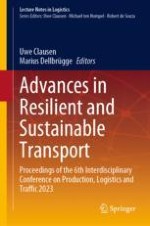This book reports on recent research and developments at the interface between the areas of production, logistics and traffic. Gathering the proceedings of the 6th ICPLT, held on March 22-23, 2023, at TU Dortmund University, in Germany, this volume gives a special emphasis to theories, trends and technologies for planning and operating freight transport systems in a sustainable and resilient way. The twenty-two contributions included in this book cover algorithms, models, and experimental methods to addresses challenges and knowledge gaps relating to traffic flows and logistic processes. They also report on advanced technologies, human factors research and strategies that should help better understand the interdependencies and conflicts of interest in the field of production, logistics and traffic, and to develop feasible solutions. All in all, this book provides a timely snapshot of research and developments concerning freight and public transport, cargo bikes, maritime and rail transport, electrical and hydrogen vehicles, simulation and optimization in production and logistics, production and supply chain management, sustainable logistics, and intralogistics and automation. It offers extensive information to researchers, engineers and other professionals, and public authorities that are active in all the above- mentioned fields.
